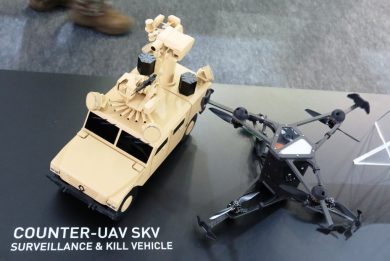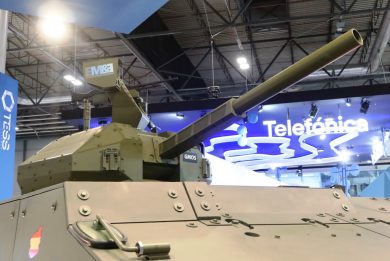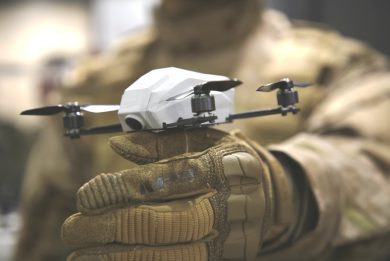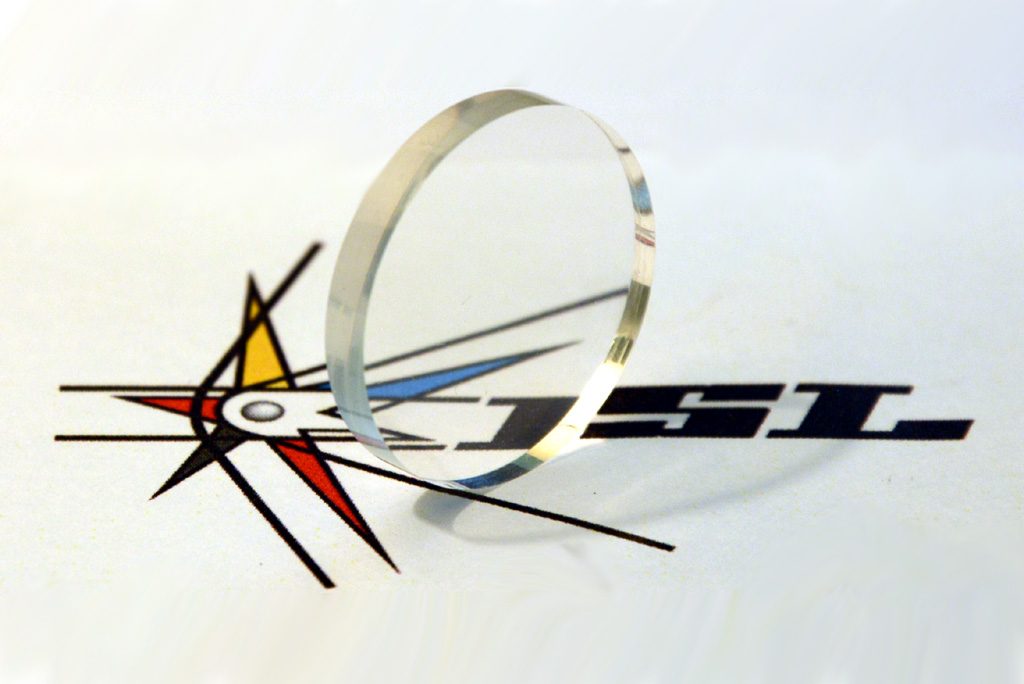
SOFINS 2021: High-tech/low TRL innovations from Institut Saint-Louis
The French-German Research Institute of Saint-Louis (ISL) took part in SOFINS 2021, the Special Operations Forces Innovation Network Seminar organised by the Cercle de l’Arbalète at the Camp de Souges, north of Bordeaux, presenting many innovations that in a way or another might provide Special Forces units with capabilities based on new technologies.
Some of these innovation are still at very low TRL, while some are close to be fielded, the level of technology involved being quite different from case to case; Institut Saint-Louis is involved in top level research but is also capable to answer the needs of SF units at short notice with more basic systems, which will be addressed in a further article.
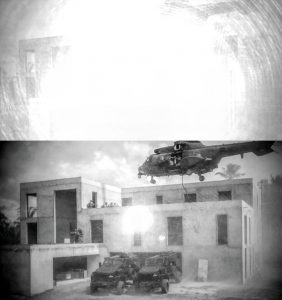
click on image to enlarge
« The laser filter is not yet ready to be integrated into available products, ISL considers it at TRL 2-3 »
Protecting soldier’s eyes as well as optronic sensors from opponents laser beams is becoming a key issue. Dazzling optronics is one of the possible uses of lasers, which allows neutralising sighting and observation systems, as well as causing potential damages both to sensors and to humans. Combining nano-diamonds synthesised in ISL’s laboratories to a polymer host, the Institute developed a non-linear filter that self-activates when hit by a laser beam. The filter senses the increased incoming power and activates, filtering the excess power, protecting the sensor and allowing it to continue producing the same image than before. The ISL states that its new filter protects against 99.9% of the laser threat, filtering laser beams up to an optical density of 2.0, while when the filter is not activated transmission is over 80% from 500 nm to 1.6 µm, allowing it to be used on normal optical systems as well as on thermal imaging systems. The laser filter is not yet ready to be integrated into available products, ISL considers it at TRL 2-3, and the Institute is looking for a partner to fully develop it.
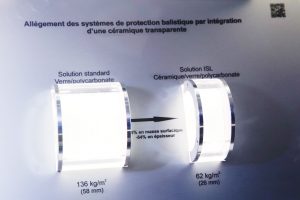
Transparent ballistic protection, low-TRL technology
Another low-TRL innovation shown at SOFINS is a technology for transparent ballistic protection. Current conventional transparent armour has a density which is roughly four times that of opaque armour at the same protection level. Numerous producers are working on transparent ceramic armour, however production and cost issues are slowing down the use of such solutions on real vehicles. The ISL developed a technology that combines standard glass/polycarbonate solutions with ceramics. Institute researchers added a ceramic layer on the outside of the armoured glass, allowing a considerable decrease in thickness and density of the package at the same protection level. According to data provided a ballistic package with a 136 kg/m2 area density and a 58 mm thickness (typical figures for a Level 4 STANAG 4569 transparent protection) might be replaced by one with a 62 kg/m2 density and a 26 mm thickness, a reduction of around 55% in density and thickness thanks to a 4 mm ceramic layer added in front of the glass/polycarbonate package, glass layers being reduced roughly to one third. The huge advantage over pure ceramic solutions is that the ISL technology allows producing transparent panels of any dimension as it adds onto a conventional solution, while for the time being ceramic tiles manufacturing is limited in size, composing tiles being needed to form a panel of sufficient dimensions. Although no cost indication was provided, it is to assume that also on that side the solution developed by the ISL should put this hybrid product between conventional and ceramic transparents.
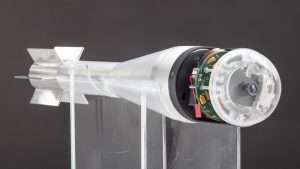
Moving into a wholly different field, ISL proposes an 81 mm round fitted with an embedded camera, to be used mostly for battle damage assessment. EDR On-Line understood that one of key parameters is cost, the ISL working on a low-cost solution, the system being inherently spendable. Integrating a camera and a one-way data-link into the projectile should not be difficult in terms of space, what might be more critical difficult is to find the right subcomponents capable to withstand acceleration, which in an 81 mm mortar is around 2,000 g. Another key issue is the link with the operator on the ground, as the round rotates on its axis, hence the need for an efficient antenna system able to provide a steady image flow. The operator is totally passive, the only active element being the round that starts transmitting during the descent phase, which makes it impossible for the enemy to locate him using electronic warfare assets. According to information provided the round would have a 2.5 km range, the downward transmission being activated at 2 km range.
EDR On-Line will try following the development of those interesting programmes in the next future, looking forward to their introduction as products that will enhance protection and effectiveness of western military units.
Photos courtesy ISL and P. Valpolini

